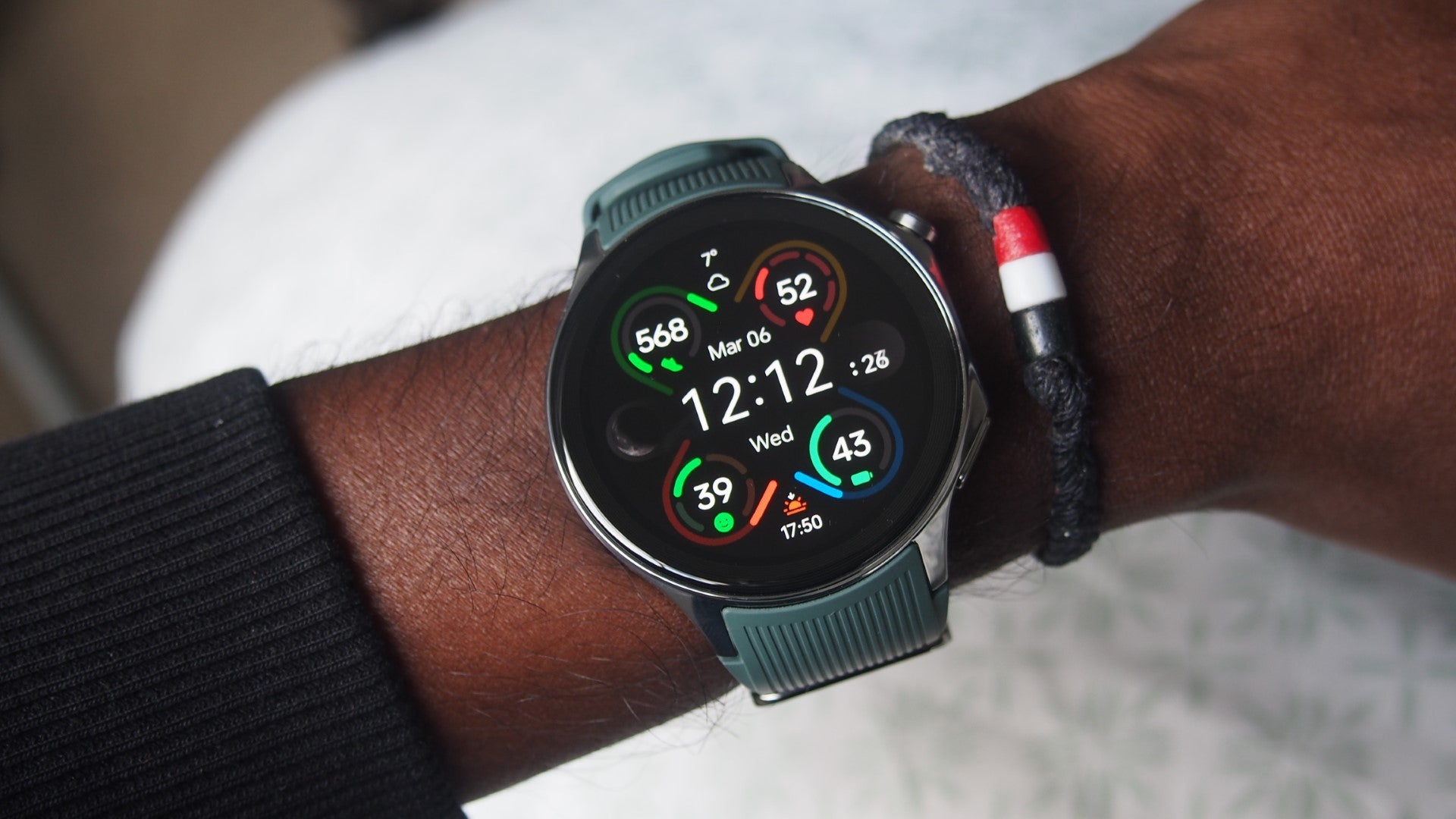Garmin Forerunner 955 Review
A truly fantastic watch for runners
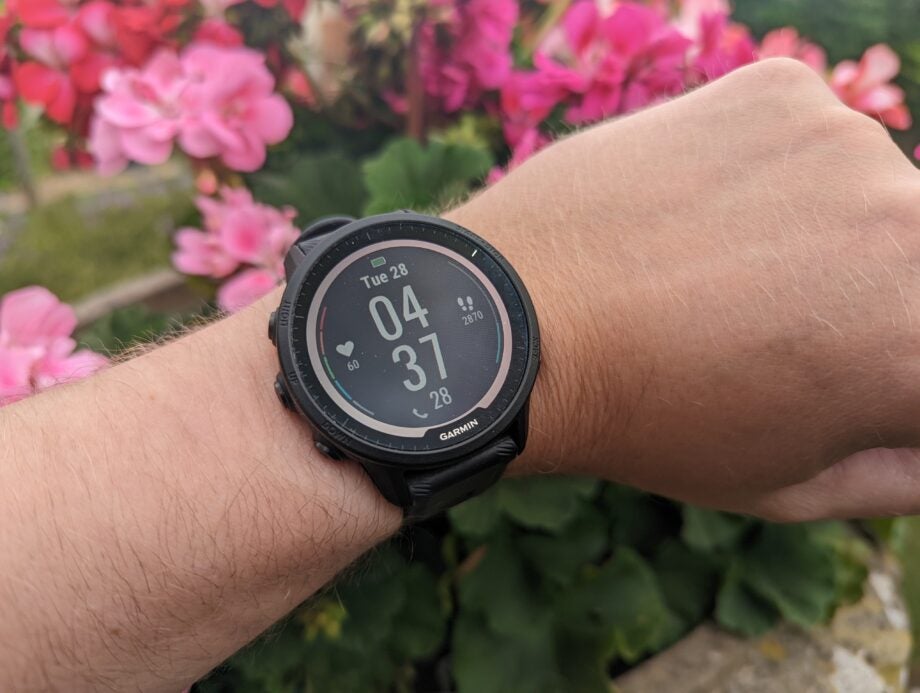

Verdict
The Garmin Forerunner 955 is the most accomplished entry into the fitness and location specialist’s cardio-focused line of wearables that we’ve tested. It offers the robust distance and fitness tracking we’ve come to expect from Garmin, alongside a few upgrades and features usually reserved for the more expensive Fenix line. This makes it an excellent option for most mid-level and serious cardio fanatics who are looking to take their workouts or race times to the next level.
Pros
- Snappy and accurate multi-band GPS connectivity
- Comfortable discrete design
- Local music playback
Cons
- Limited smartwatch functionality
Availability
- UKRRP: £549.99
- USARRP: $499.99
Key Features
- Lengthy batteryThe 955 Solar easily lasted a full week under intensive use with lots of GPS activity during tests
- Multi-band GPS supportHaving been upgraded to support multi-band GPS, this watch offers accurate and reliable distance tracking
- Local music supportThe Forerunner comes with internal storage that can be used for local music and map support
- TouchscreenThe 955 Solar features a 1.3-inch, transflective touchscreen
Introduction
The Garmin Forerunner 955 is the long-awaited follow-up to the 945 that debuted more than two years ago. In Garmin’s lineup of sports-focussed smartwatches, it sits below the Fenix 7 and Enduro lines, but well above the cheaper Vivosmart 5 and its more affordable sibling, the Forerunner 255.
It’s a sports tracker, designed for serious athletes who want a slick wearable to help them train for runs and triathlons.
Its arrival is a big deal because, as you’ll see if you jump over to our best fitness tracker and best running watch guides, Garmin devices tend to impress our reviewers when they’re put through their paces. Which is the reason we had high hopes for this new wearable when it arrived.
Thankfully, following the use of the 955 as my primary tracker over the course of three weeks, I can confirm it is one of the best running watches for its target market. This is because, despite coming with a cheaper RRP than the older 945 when it launched, Garmin has managed to load up the 955 with a host of new features that make the watch a clear step up on the 945, and an easy recommendation for semi-serious athletes. Here’s everything you need to know about it.
Design and Screen
- Available in standard (tested) and Solar options
- Smaller than Garmin’s more expensive Fenix and Enduro watches
- Upgraded to include a touchscreen
Stepping away from using the Fenix 7 as my daily tracker, the 955 immediately appeared smaller and more discrete, despite sharing a lot of the core design elements. The spherical chassis is a good few millimetres thinner, and the screen is about half a centimetre smaller.
The smaller dimensions coupled with my review unit’s black colour make this watch comfortable for wearing outside of the gym, too, or with a suit without looking out of place.
The only slight downside is that unlike the Fenix, the frame here isn’t metal, and there’s no sapphire glass option either. This means that despite the 955’s 5 ATM (50m) water-resistance rating, I’ve been far more cautious about using the Forerunner to track more extreme sports. While it’s well made, doing fine through activities such as swims, runs, cycles and hikes, for example, I’m not convinced that the 955 would survive an accidental encounter with a rock on a climbing wall, the way the Fenix 7 did when I used it.
Despite featuring the same transflective memory-in-pixel (MIP) display technology as the Fenix, which made that watch a little difficult to read outdoors, the Forerunner’s screen proved to be noticeably brighter out of the box. This meant it remained legible in bright, sunlit conditions.
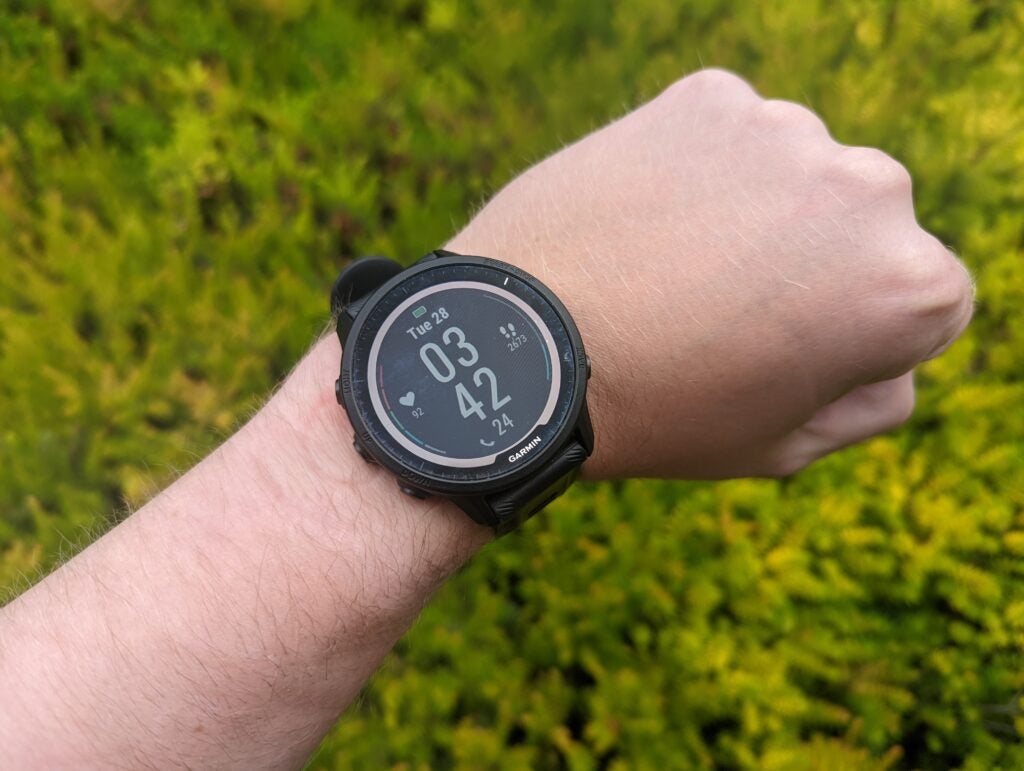
Also like the Fenix 7, the screen here has been upgraded to feature touch support. As such, you can use your finger to scroll through the watch’s menus and enact commands, alongside using the five physical buttons on the device’s side.
The touch input is welcome, and I did use it on occasion – but, in truth, it was the more reliable physical buttons that I used for the majority of time. The buttons follow the exact pattern of past Garmin devices. The bottom-left buttons act as up and down controls; the top-left input activates the backlight; the top-right button acts as a “yes” input and shortcut to the watch’s activity tracking menu; and the bottom right input serves as a back button.
Although touch controls sound like they’d be intuitive, I found that the 955’s screen wasn’t as responsive as the AMOLED display seen on the Galaxy Watch 4, Apple Watch SE and Garmin’s Venu 2S, especially when my finger was even moderately wet. All too often, the watch wouldn’t recognise swipe and tap inputs on the first attempt while running with the device, making it quicker and easier to just use the physical buttons.
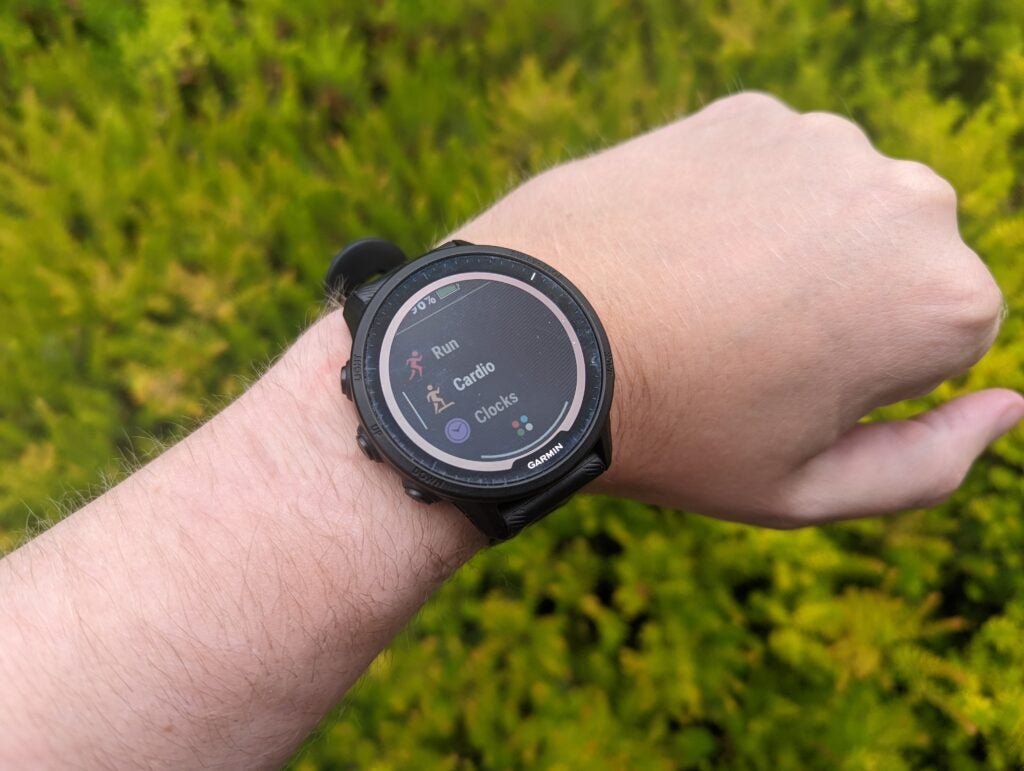
Tracking and Features
- Radically upgraded tracking powers
- Post workout analytics and reporting features not found on the Fenix
The biggest changes to the Garmin Forerunner 955 are on the inside. Garmin has upgraded the watch to include a number of advanced features seen on the Fenix 7, while also adding a few post workout analytics services that are unique to the 955 and 255.
At a technical level these include an upgrade to multi-band GPS support and the Garmin Elevate V4 Optical HR sensor. Missing from the older 945 device, both new features aim to offer improvements in a couple of key ways. The new GPS support aims to help distance tracking stability, connection strength and speed. Meanwhile the heart rate sensor, which we first saw on the Venu 2, aims to deliver more accurate heart rate and SpO2 tracking. The multi-band GPS is also the primary differentiator between the 955 and the cheaper Forerunner 255, which we’re in the process of reviewing.
Then, at a software level, the 955 provides the ability to track many more activities while delivering a wealth of more developed reporting mechanics and data points.
In use, the 955 felt like the most developed Forerunner I’ve tested to date. The GPS felt significantly more snappy, and I didn’t notice any real difference in the time it took, compared to the Fenix 7, to secure a stable connection.
Using it to track my morning cardio sessions each day, three 5km runs per week and outings on my bike around London, the device performed wonderfully. Aside from one dropout while cycling around Stratford, a busy signal area with many tall buildings, location tracking proved accurate. Running around a track I know is roughly 5.3km, the Forerunner 955 never read more than 0.11km from that figure, being in line with the figures recorded on the Fenix 7 against which I was testing the device.
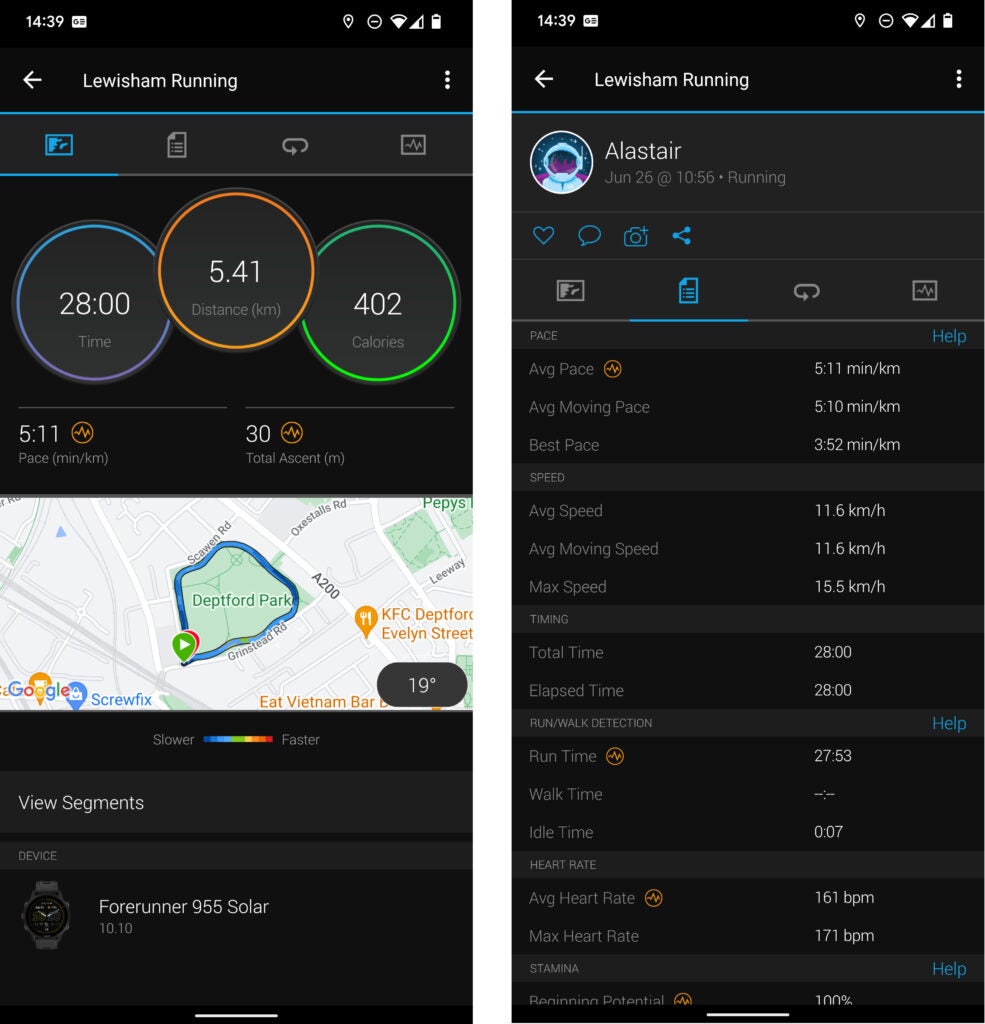
HRM tracking was also on point, albeit not best in class. There were a few anomalies during intense HIIT sessions; but, on the whole, the figures matched those seen on the Fenix 7, proving sufficiently uniform to keep track of my heart rate zones and monitor progress. That said, if you want the best accuracy possible then I’d strongly recommend investing in an HRM strap. These offer more accurate data, especially in intense workouts such as HIIT, where wrist-based sensors struggle to keep up with the repeated and significant fluctuations in your heart rate.
However, like all the top-end Garmin devices I test, what differentiates the Forerunner 955 from most affordable trackers and less focused smartwatches such as the Apple Watch 7 and Galaxy Watch 4, are its advanced post workout analytics and coaching powers.
Here, the Forerunner 955 feels far closer to the Fenix 7 than the older Forerunner 945. For starters, following each run, the training status metric offers significantly detail about the gains you might have made aerobically and anaerobically, which also providing a gauge about whether you’re getting close to peaking or overreaching with the workout. This, plus the detailed breakdown of the time you spent in each heart rate zone and uniform VO2 Max estimates and SpO2 readings, make this a great device for race training or general attempts to improve your 5km and 10km times.
The upgraded internal storage space also meant that, unlike the 945, I was able to store a reasonable amount of music and maps locally on the 955. This made it quick and easy for me to get turn-by-turn navigation while cycling, and access music without needing to lug my phone along with me.
However, what really sets the 955 apart from any other Garmin wearable at the moment is its selection of new tracking features. The ones I’ve appreciated most are the new daily report, training readiness, HRV status and race calendar features.
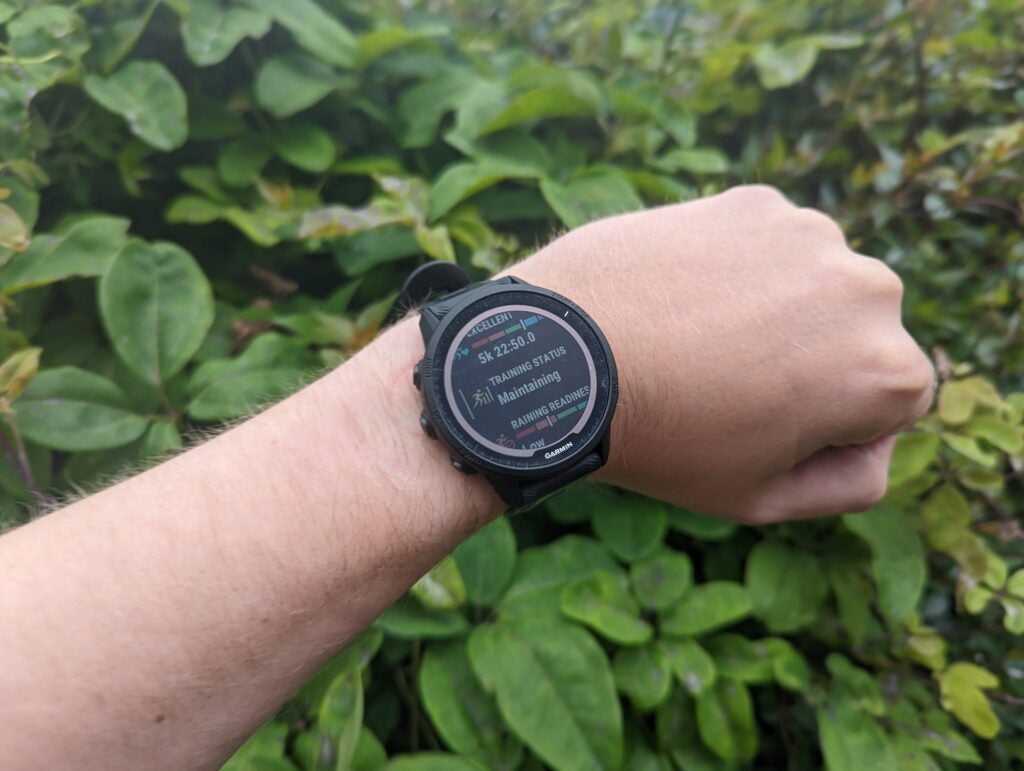
Daily report does exactly what it says on the tin, providing a summary of all the data the watch has collected over the past 24 hours. This includes summaries of how you’ve slept, your current training readiness and the type of workout, if any, the device would recommend to help achieve your goals. In particular, I’ve found the morning report very useful for planning my day around the watch’s workout recommendation. The only point of question is that the 955, like all the wearables I’ve tested recently, continues to maintain that I’m terrible at sleeping – which is the one area in which I’m certain I don’t have any issues.
Training readiness can be accessed from the watch’s main menu. It complements the training effect and VO2 Max estimate features seen on Garmin’s Fenix line. It offers a simple score based on the biometric data the watch has collected, alongside any races or goals you have set in the Garmin IQ app, to tell you how ready you are to train. The higher the number, the more ready you are.
To make things even easier to understand the metric is colour-coded, with red and orange denoting that you need to take it easy, and green indicating that you’re suitably recovered. As an added bonus, clicking into the widget will bring up a summary of the reasons for that particular status. Throughout testing the feature has highlighted a lack of sleep as a key reason that I’m not recovering as quickly as I should be.
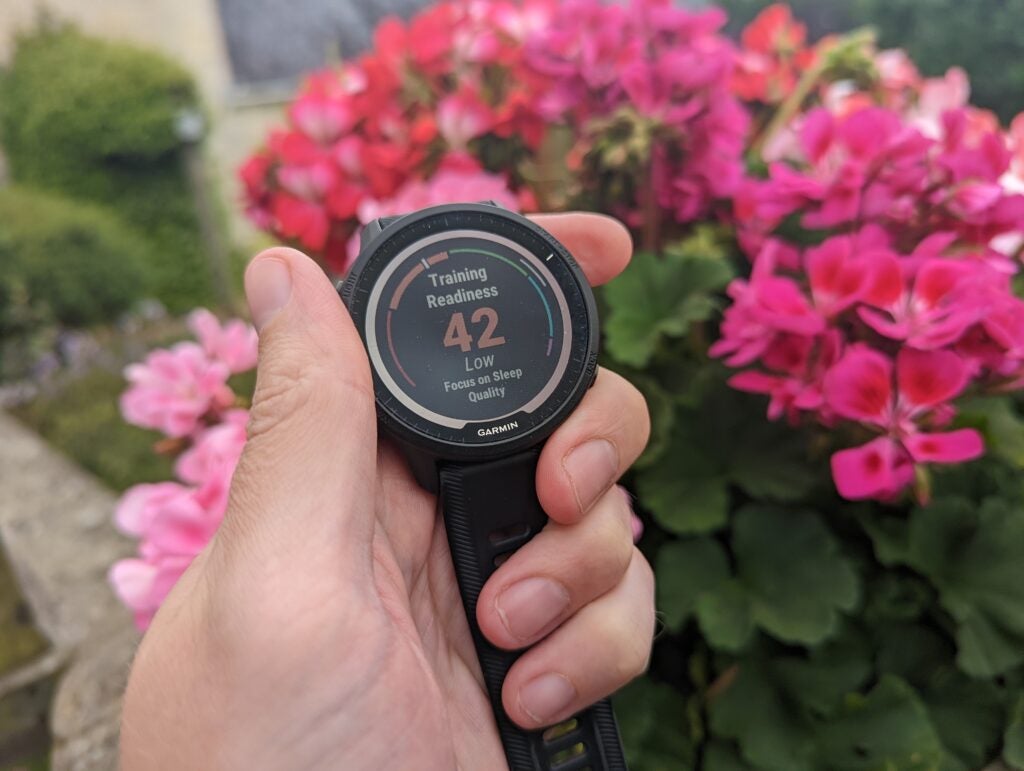
HRV Status is another metric that helps to plan out your rest and workout days more easily. It takes an average of your heart rate and other data collected over the first three weeks of wearing the watch, after which you’ll receive insights on your stress levels and their frequency. Combined, these metrics have helped me to identify a number of issues that are affecting my training progress of which I was completely unaware, even having come from the Fenix 7.
The only real downside to the Forerunner 955 is that, like all the Garmin devices we’ve tested, it offers very limited smartwatch functionality. The on-board music controls work well enough, but for streamers there are few options, with big names such as Tidal not being supported. This is systematic of a wider app shortage in Garmin’s ecosystem. In addition, Garmin Pay still isn’t widely supported in several markets, including the UK. As a result, on the smartwatch side of things, the 955 is only really good for the basics, such as incoming notification alerts.
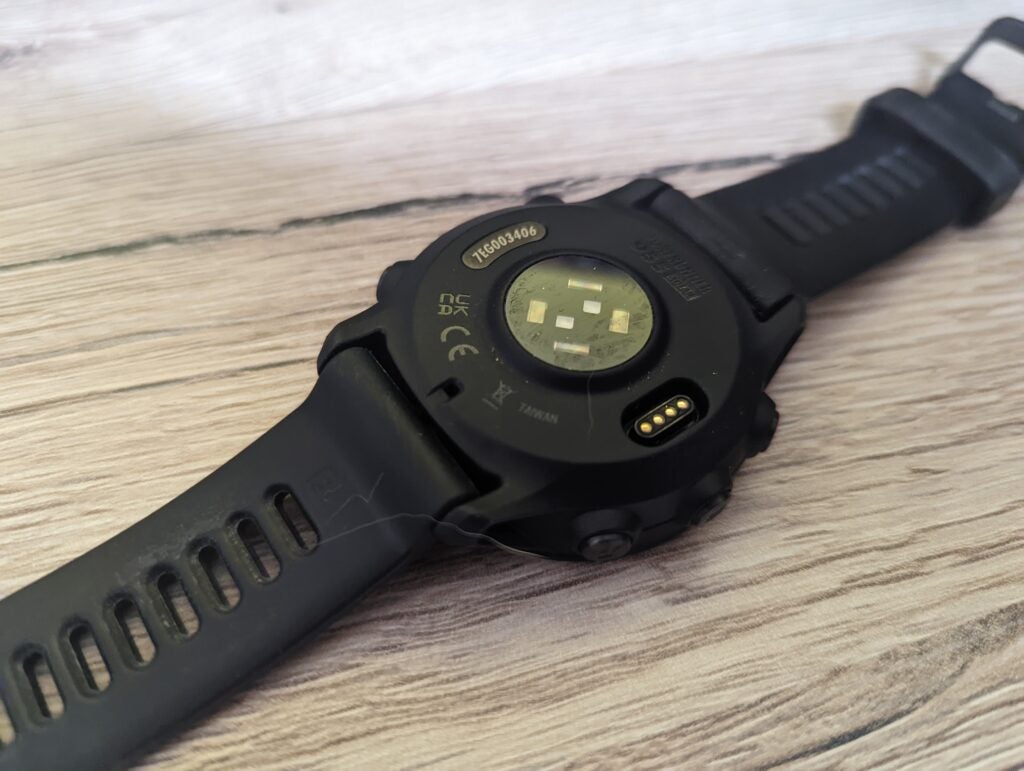
Battery Life
- Quoted 15 days in standard use and 42 hours with GPS
- Easily lasts a full week of use
- Ongoing use of a proprietary charging cable is annoying
Garmin sells the standard 955 alongside a Solar option. The latter allows charging of the device using solar energy. Traditionally, we’ve found that, in decent light, such an option enables you to get an extra hour of GPS use out of a device. This was the case with the Solar edition of the 955 we had in for review – although, until I get the non-Solar version in, I can’t sensibly comment on how the battery life of the two variations compare. I’ll update this review as and when I get in the base model.
However, even without using solar energy for top-up, the 955 offers solid battery life. During my time reviewing the device, I was easily able to get a full week of heavy use out of it. This was with using the 955 to control my music and keep track of incoming notifications, as well as providing directions during cycles and tracking my daily 30-minute cardio workout and three 5km runs.
By smartwatch standards this is pretty impressive. By comparison, we had to charge the Apple Watch 7 every two days with similar use. However, the figure does put the Forerunner 955 slightly behind its larger, and more expensive, Fenix 7 and Enduro siblings. The Fenix usually survived between 1.5-2 weeks with similar use. The Enduro managed to make it through nearly a month.
Latest deals
Should you buy it?
If you’re after the all-round best running watch currently available The 955 isn’t rugged enough to survive extreme activities, but for cardio fanatics it’s the best option currently available, offering wonderfully detailed analytics, useful coaching tips and a comfortable marathon-ready fit.
If you’re new to running, or want a full-fat smartwatch For those just getting into exercise, there are more suitable wearables, including Garmin’s own Vivosmart 5 – it’s cheaper and offers all the functionality you’ll need to find your pace. Garmin’s heavy focus on fitness tracking also makes the 955 a poor choice for buyers who want a smartwatch first and tracker second. These folk would be better opting for a dedicated smartwatch.
Final Thoughts
The Garmin Forerunner 955 is one of the most impressive running watches I’ve tested in quite some time. It borrows most of the best features seen on the more expensive Fenix 7 and brings them down to a more affordable price point, making it a fantastic option for cardio fanatics and triathletes. The only downside is that its analytics and price make it overkill for new, or more casual runners, who will be better off investing in a more affordable wearable such as the Vivosmart 5. It is plastic, rather than metal, chassis also means extreme sports fans or more hardcore athletes would do well to opt for the Fenix or Enduro instead.
How we test
We thoroughly test every fitness tracker we review. We use industry standard testing to compare features properly and we use the watch as our main device over the review period. We’ll always tell you what we find and we never, ever, accept money to review a product.
Worn as our main tracker during the testing period
Heart rate data compared against dedicated heart rate devices
Side-by-side GPS comparison with competing devices
FAQs
The Forerunner 955 supports Spotify and Deezer. But services such as Tidal, Apple Music and Prime Music aren’t available.
The Forerunner 955 shares many of the same core features as the Fenix 7, but its plastic chassis and the lack of a Sapphire Glass option means it isn’t tough.
Garmin doesn’t currently offer the Forerunner 955 with an OLED screen option. The only upgrade you can opt for is to add Solar charging to the device.
Full specs
You can see a breakdown of the Forerunner 955’s specs and how they compare to its closest siblings and rivals in the table below.
Sustainability
TrustedReviews’ holds the fact that global warming is not a myth as a core value and will continuously endeavor to help protect our planet from harm in its business practices.
As part of this mission, whenever we review a product we send the company a series of questions to help us gauge and make transparent the impact the device has on the environment.
We currently haven’t received answers to the questions on this product, but will update this page the moment we do. You can see a detailed breakdown of the questions we ask and why in our sustainability info page.




